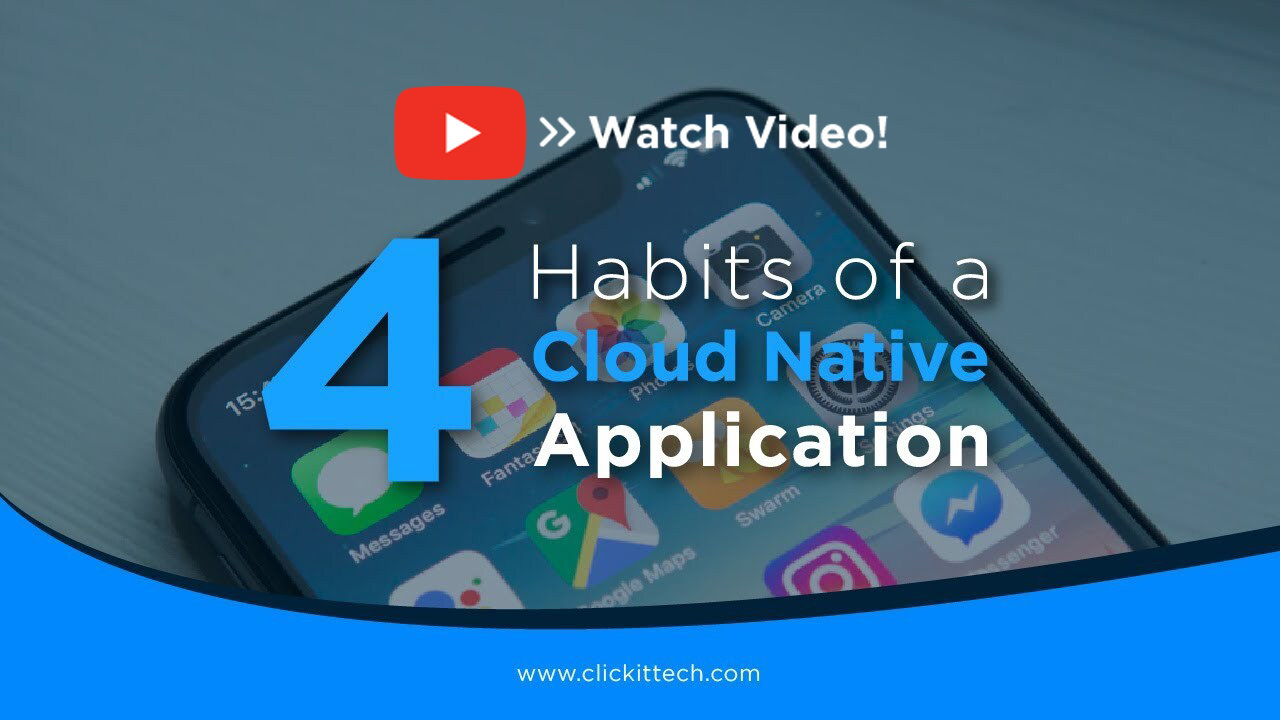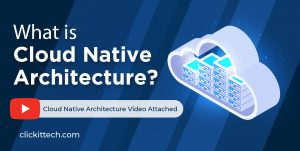Nowadays, every digital company is looking to be at the leading edge of technology, and one way to achieve it is by changing the way they design and use applications; hence, it is important to get immersed into what a DevOps Cloud Native Application is.
In this blog, you will learn exactly what a cloud native application is, and we will review 4 of its habits, which are paramount for enterprises.
Table of contents
Let’s start!

Cloud Native Application
In a nutshell, cloud native combines multiple modern and agile methodologies, including, microservices, serverless, SaaS, PaaS, CI/CD, and DevOps practices.
Habits of a Cloud Native Application
1. Cloud modernization
Fundamentally, it consists of adopting the 12-factor methodology, which is a methodology to build modern, scalable, and resilient SaaS applications for any programming language.
Some of the components are dependency isolation, portability, CI/CD, source control versioning, parity or environment parity, and more bits.
2. Cloud – API
Essentially, Cloud API has the ability to communicate across different cloud environments utilizing the same API protocol to share information and data coming from the customer or going to the customer, like Open banking, whose core premise is to incorporate secure API across different financial service providers.
Even for Kubernetes, its main premise is to build an API in front of the cluster on all the Kubernetes platforms.
Another component from this section is to utilize SaaS or fully managed services like Amazon RDS, MongoDB, DynamoDB, Amazon SES, MongoDB Atlas, or any other service that help you develop faster.
Please don’t reinvent the wheel and always integrate different fully managed services.
3. Cloud native
In brief, is the adoption of microservices, light, and portable containers, loosely coupled architectures with Docker and how to manage microservices and containers. In this case, it would be Kubernetes, AWS ECS, or even Fargate.
Alternatively, you could adopt the serverless ecosystem, which is the highest abstraction level in the Cloud.
4. Cloud DevOps
Fundamentally, you must automate repetitive tasks, utilizing Infrastructure as Code. This infrastructure business logic needs to live in the source control version system like Git or Bitbucket.
Another relevant point is that the infrastructure should be immutable, meaning that your infrastructure shouldn’t change after getting deployed if it needs some modification, needs to be done before the deployment, or provisioning the infrastructure from images, scripting, templates, or anything else. But if you need to change something on the fly, you need to follow a process that brings a lot of consistency and portability and is good for disaster recovery.
And finally, a key tenet is that your application should be stateless; this is a modern approach where your application shouldn’t save data locally, in your container or hard drive, or even in your virtual machine. Instead, you should save the data in cloud storage, in backed services like databases, caching systems, or even in cloud storage like Amazon S3.
In this context, you can still implement real-time application crash monitoring to identify, analyze, and rectify problems rapidly. The latest tools allow for automation to be applied to this process, regardless of whether your app data is stored locally or on the cloud. This is an especially impactful habit to adopt if uptime is a priority.
To sum up
Now that you know the 4 habits of a cloud native application, it is time to adopt them!
This way, you will join the continuous transformation journey that is needed to disrupt and modernize your digital products; otherwise, they won’t reach your clients.
Did I miss any other cloud native habit?
Leave your comments; we would love to hear from you!
FAQs
Cloud-native is considered an innovative software development approach designed to leverage the cloud computing model fully. It allows organizations to build applications using microservices architecture and run them on dynamically orchestrated platforms.
Cloud modernization is one factor where the components are dependency isolation, portability, CI/CD, source control versioning, and the adoption of microservices. Applications built on the cloud-native architecture are reliable, deliver scale and performance, and offer faster time to market.
Cloud-native architecture encompasses various modern and agile methodologies, including microservices, serverless, SaaS, PaaS, CI/CD, and DevOps. It involves centrally hosting and delivering resources over the internet through a pay-per-use model. Managed services efficiently address cloud infrastructure, while a globally distributed architecture enables software installation and management across the infrastructure. Autoscaling ensures optimal resource levels, and Infrastructure as Code (IaC) allows organizations to manage infrastructure through configuration files, applying software engineering practices for automated resource provisioning in a flexible and efficient manner.
-Optimized costs
-Auto-provisioning
-Faster release
-Simplifies IT management
-DevOps culture
-High scalability
-Superior customer experience
DevOps seamlessly integrates with cloud-native architecture, ensuring efficient software delivery through a blend of speed, agility, and control. AWS enhances this approach with essential tools such as Docker and Microservices Architecture for streamlined container automation, Amazon Elastic Container Service (ECS) for robust container orchestration on EC2 instances, and Amazon Kubernetes Service (EKS) for open-source flexibility in managing container environments. Together, these components create a comprehensive ecosystem for successful software deployment and management.









